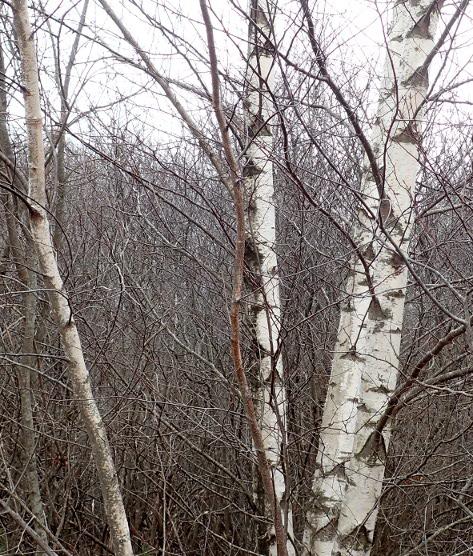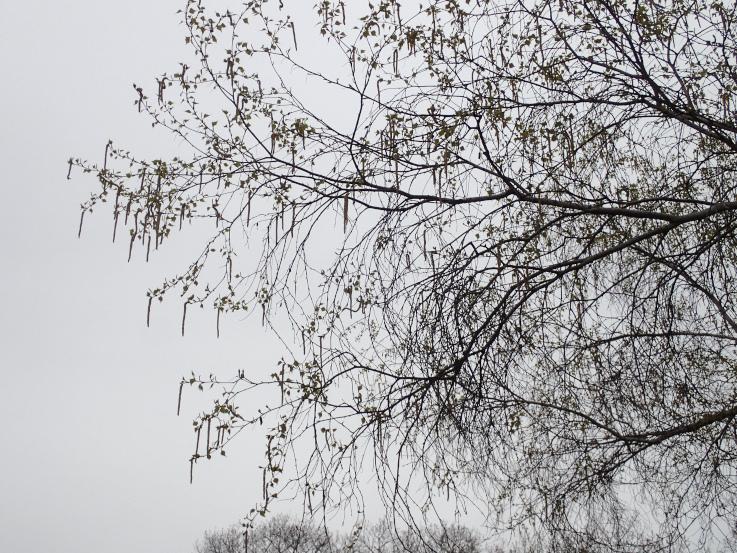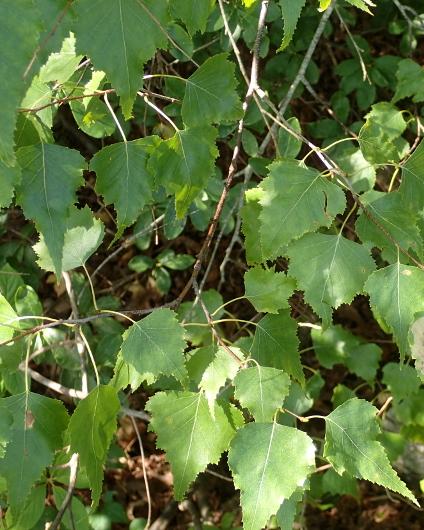Gray Birch
Betula populifolia
Important early successional tree in the Northeast, which colonizes clearcuts, burned areas, abandoned fields, often found
along roads and railroads, this modest tree is very unassuming and will cope with literally any conditions—as long as there
is enough light and no standing water. Compared to other native birches, it is short-lived, frequently growing multi-stemmed,
forming graceful clumps up to 30 ft tall. Its white non-peeling bark typically appears grayish due to abundant dark lenticels
(tiny breathing slots) and characteristic dark triangular patches on trunk below branches; leaves wide-triangular, with long
narrow tips. Flowering is early in May, staminate (pollen) and pistillate (fruiting) flowers, borne in separate catkins on
same tree. Showy pendulous catkins composed of pollen flowers are pre-formed during previous fall season at twig tips, overwintering,
and then expanding in spring with leaves. They are singular, which makes this birch different from the rest of our birches,
whose catkins are in groups of two or more. Fruiting catkins are also singular, less conspicuous, upright to nearly pendulous,
shattering into separate two-winged nuts during early fall. In southeastern MA, natural hybrids of gray and paper birch are
rather widespread (probably more frequent than pure paper birch, a northern species). Gray birch attracts many insects, which
in turn attract backyard and migrant birds: warblers, orioles, tanagers, vireos, cuckoos, thrushes, and others.

Tight bark and black triangular areas below branches on gray birch. February 24, Rockland

Solitary pollen catkins—character helpful for identification of gray birch. May 8, Beaver Brook Res., Belmont

Triangular, long-tipped leaves of gray birch. September 12, Boot Pond, Plymouth